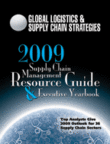
Visit Our Sponsors |
|
|
|
|
|
|
|
|
|
|
|
|
|
|
|
|
|
|
|
|
|
|
|
|
|
|
|
|
|
|
|
|
|
|
|
|
|
|
|
|
|
|
|
|
|
|
|
|
|
|
|
|
|
|
|
|
|
|
|

Like it or not, the signals from climate systems, the marketplace and the legislature all point to the environmental agenda becoming increasingly important as a business risk, a business opportunity and an opportunity for organizational transformation and operational improvement.
While not yet fully embedded as a cost of doing business, the agenda around carbon within manufacturing and the supply chain has evolved significantly over the past year.
Europe continues to drive the agenda and has recently introduced the DEFRA/Carbon Trust PAS2050 protocol and guidelines for the carbon labeling of products. We're nervous about the introduction of such policy-forcing measures primarily because cataloging carbon contents of all SKUs does not in itself drive proactive emission reduction-it's likely to redirect financial resources away from driving emission reductions and energy efficiency. While we are concerned about wholesale labeling of all products-something that the combined lobbying of supermarket retail chains and NGOs might ultimately force-we do recognize the virtue of undertaking full environmental lifecycle analysis on selected product categories for implementation of efficiency programs across all closely related SKUs.
But U.S. manufacturers are rapidly following suit. We have already witnessed the commencement of regional cap-and-trade greenhouse gas (GHG) emission allocation trading via the Regional Greenhouse Gas Initiative (RGGI). Barack Obama has made his intentions clear-a reduction to 1990 emission levels in the next 12 years and an 80 percent reduction in GHG emissions by 2050. While the latter is consistent with the U.K. and many other national long-term targets, the short-term goal remains above that required under the Kyoto protocol. Legislation is around the corner, and likely to result in regulated national cap-and-trade programs by the second Kyoto commitment period commencing 2012. AMR Research data indicated that more than half of U.S. manufacturers are yet to take the first steps in GHG emission tracking and benchmarking. This represents a multibillion-dollar GHG software market opportunity for software and service providers.
The past year has been one dominated by energy, banking and general stock market volatility. It's not immediately clear that any of these modalities of volatility are any better understood or likely to be fixed soon. Indeed some may be mutually exclusive. A $700bn "buy-out" for the banking sector could have just as easily been incorporated as "buy-in" to the low-carbon, clean-tech, energy-efficient and smart supply chains that are forecast for the future economy to reduce fossil fuel dependency. One thing is for sure, data from a cross-section of sources has made it clear that sustainability and green initiatives are recession-proof. That's not to say that sustainability budgets are not being challenged. But it is the case that the combined benefits of cost saving through efficiency programs, challenges relating to the recruitment and retention of talent, the focusing of innovation through sustainability, and the need to protect brand to the corporate and product level are all recognized as being crucial for corporations and supply chains moving forward and all direct benefiting via sustainability initiatives.
The Outlook
Sustainable business practices are key elements of long-term business strategy. Fact-based sustainability requires three key elements: 1. frameworks for mapping and communicating current and future sustainable business performance; 2. quantitative metrics to measure sustainable business practices that allow comparison, benchmarking and reporting; and 3. analytical business tools that systematically evaluate sustainable business decisions in a fashion similar to any key business decision.
RELATED CONTENT
RELATED VIDEOS
Timely, incisive articles delivered directly to your inbox.


